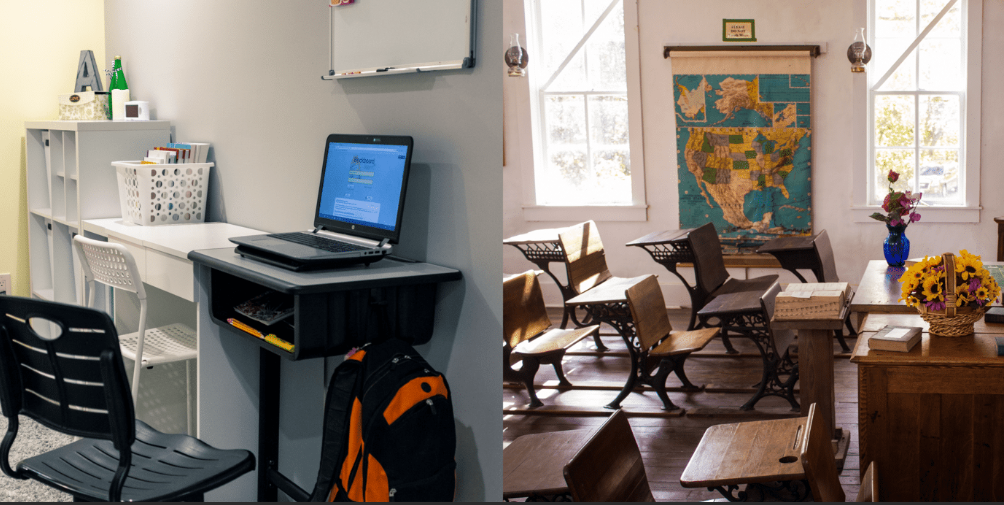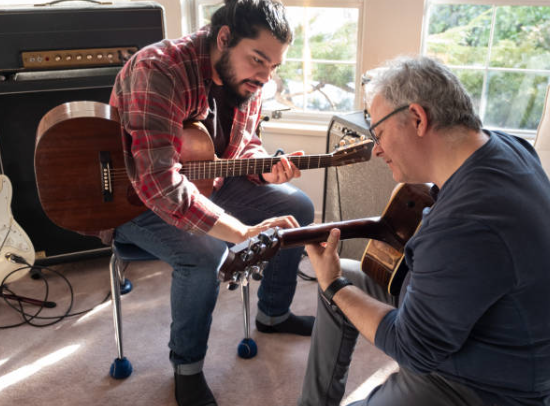What You Need To Know: Virtual School & Traditional School

Education is the key to personal and societal growth, and choosing the right school for our children is a decision that weighs heavily on every parent’s mind no matter their geographical location. With the advancement of technology and more specifically, after COVID-19, virtual schooling has become a viable alternative to traditional brick-and-mortar schools. In this blog, we will conduct a comprehensive comparison between virtual and traditional schooling, discussing key differences and when each might be the right choice.
1. Flexibility
One of the most noticeable differences between virtual and traditional schooling lies in their level of flexibility. Virtual schools offer students the opportunity to learn from anywhere, at any time. With no fixed schedules, learners can create their own study routines and work at their own pace. This level of flexibility is particularly useful in cases where a student has other commitments, such as pursuing a talent or participating in extracurricular activities.
On the other hand, traditional schools follow a fixed schedule which means students must accommodate schedules making it hard for the ones with unique scheduling needs, like professional athletes or performing artists.
2. Socialization
Traditional schools provide ample opportunities for children to interact with their peers, fostering social development, teamwork, and communication skills. In a physical classroom setting, students have face-to-face interactions with teachers and classmates, allowing for personal connections and collaborative learning experiences.
Alternatively, virtual schools lack physical interactions, making socialization more challenging. However, Virtual schools can still provide opportunities for socialization, albeit in a different format than traditional schools. Through online discussion forums, students can engage in meaningful conversations and debates, sharing their opinions and learning from each other. Virtual group projects also allow students to work together towards a common goal, practicing collaboration skills and forming connections with their peers.
3. Curriculum and Teaching Methods
Another critical aspect to consider is the curriculum and teaching methods employed by virtual and traditional schools. Traditional schools often follow a standardized curriculum that includes everything from core academic subjects like math and English to additional topics like art, music, physical education, and more. This curriculum is often predetermined by educational authorities or governing bodies, such as the state or district, and is followed by all schools within that jurisdiction. This ensures that students are provided with a standardized set of content and skills that are generally considered essential for their overall development and future success.
Virtual schools, on the other hand, may also align with national standards but with a twist of personalized learning experiences tailored to individual students’ needs and interests. With a wide range of resources and technologies at their disposal, virtual schools can provide a more individualized approach to education.
4. Resources and Extra-Curricular Activities
Traditional schools often have better access to facilities and resources compared to virtual schools. They usually have physical campuses with well-equipped libraries, laboratories, and other facilities that can enhance the learning experience. Additionally, they offer various extracurricular activities such as sports teams, arts programs, and clubs, which provide students with opportunities to pursue their interests outside of academics.
On the other hand, virtual schools may lack physical resources since they do not have physical campuses. However, they make up for this limitation by providing online resources that students can access from anywhere. They may also arrange virtual guest lectures and field trips, allowing students to interact with experts and explore beyond their textbooks.
Nonetheless, it is important to consider that the availability and quality of resources can vary between virtual schools. Some virtual schools may provide extensive resources and a wide range of activities, while others may have limitations in terms of the resources they offer. It is crucial for students and their families to thoroughly research and choose a virtual school that meets their needs and provides the necessary resources for a well-rounded education.
5. Personalized Support and Special Needs
In traditional schools, there are specialized staff members who work with students who have specific learning needs, such as special education teachers or counselors. These professionals have expertise in addressing the needs of students with disabilities or learning difficulties.
However, virtual schools, which operate online or remotely, do not have a physical presence and can therefore face challenges in providing personalized support for students with special needs. Despite this, advancements in virtual learning platforms have made it possible to bridge this gap and ensure that all students, including those with special needs, can access inclusive education. Also, these entities can provide personalized support through various tools and technologies. For instance, individualized learning plans, where students receive instruction and assignments tailored to their unique abilities and learning styles.
Online platforms can also provide adaptive learning resources, adjusting the difficulty or pace of content based on a student’s progress. Additionally, virtual schools can offer virtual counseling services or online collaboration tools to facilitate communication and support for students with special needs.
Ultimately, the aim of personalized support and special needs accommodations in virtual schools is to ensure that all students have equal opportunities to learn and succeed, regardless of their individual challenges or disabilities.
Which is the right choice?
The decision between virtual and traditional schooling ultimately depends on various factors, including the student’s learning style, individual preferences, and unique circumstances. Virtual schooling can be a suitable choice for self-motivated learners who thrive in independent environments. It can also benefit students in situations where traditional schooling is not a feasible option due to geographical constraints or health concerns. On the other hand, traditional schooling offers the advantages of socialization, peer interactions, and a wider range of extracurricular activities.
In conclusion, virtual and traditional schooling both have their merits, and the ideal choice varies from student to student. It is crucial for parents and students to thoroughly evaluate the options, considering their individual needs and circumstances. Ultimately, the goal remains the same: to provide a quality education that nurtures the intellect, character, and growth of each student.
Real Brave is a music studio that has a unique learning environment for live virtual lessons so people can learn from home, from any of our 3 locations: Oakland, NJ, Queens, and Manhattan NY. We have highly trained instructors to give you all the music knowledge so if you´re looking to start your journey in music, a parent looking for the best place to learn an instrument or just looking for a hobby, you are in the right place! If you want more info, please email me at dan@realbraveaudio.com




